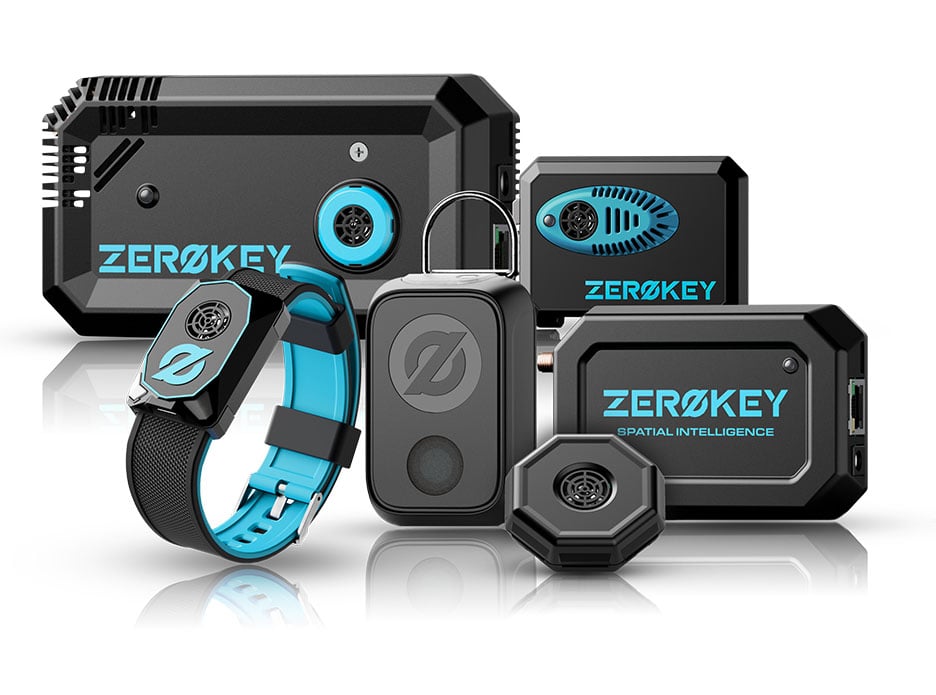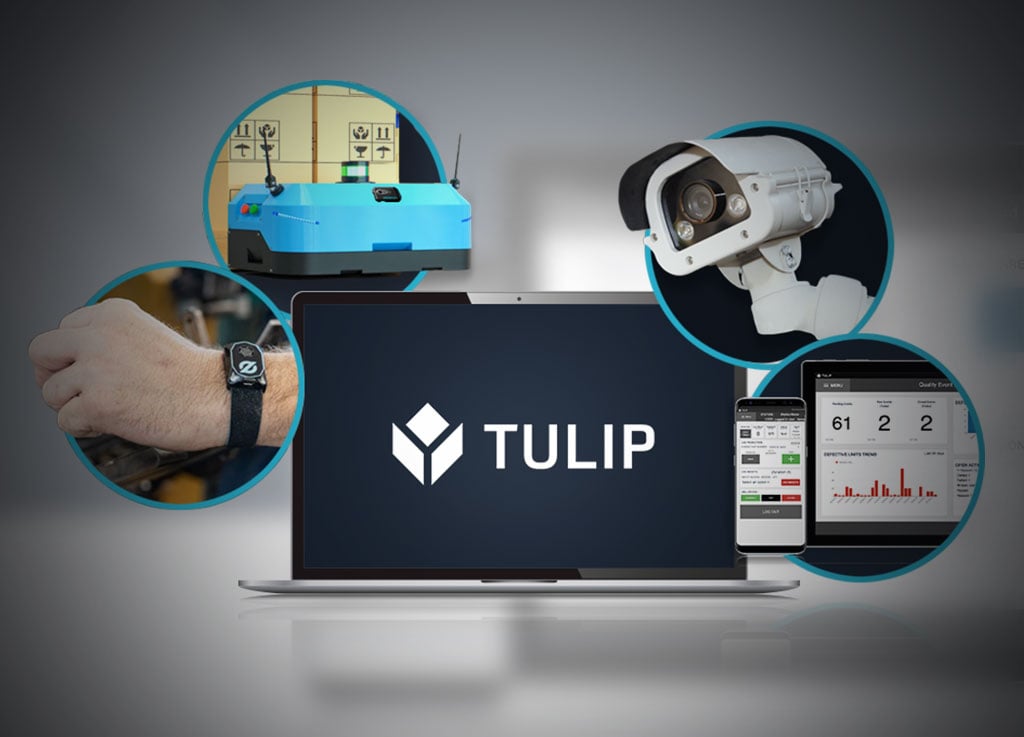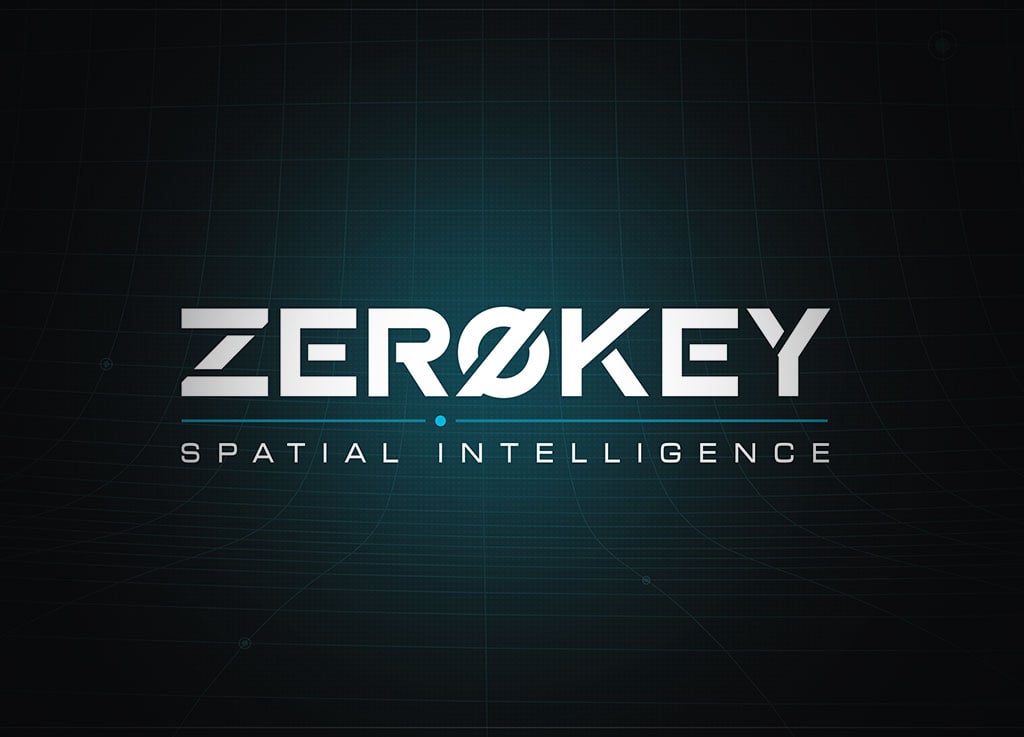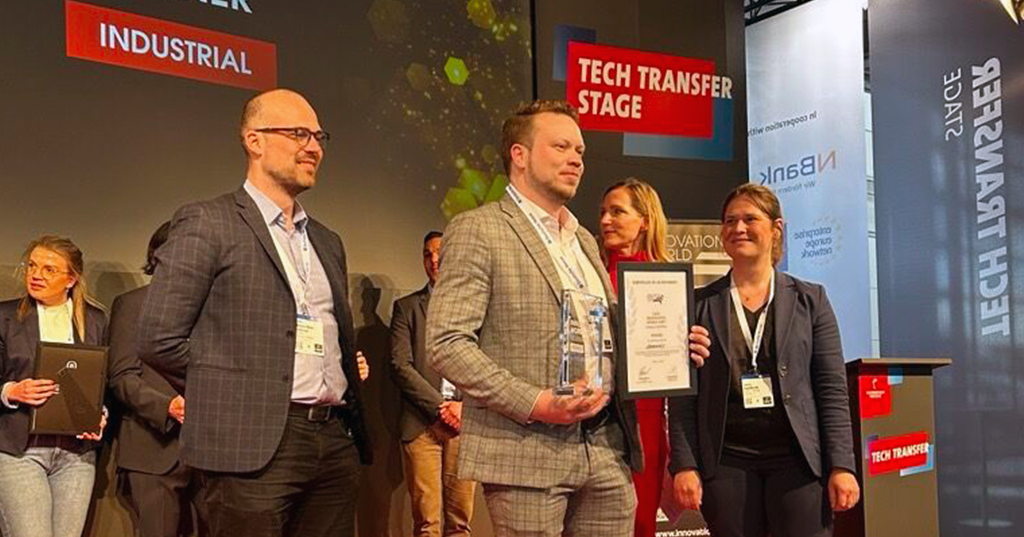Choosing the Right Indoor Positioning System
for Your Application
Indoor positioning systems have become increasingly important for a variety of applications, including retail, safety, logistics, manufacturing, supply chain, and healthcare. Choosing the right localization technology for your business depends on factors like accuracy, cost, scalability, and existing infrastructure.
This comprehensive decision guide will help you navigate the pros and cons of different indoor positioning technologies, including Radio Frequency Identification (RFID), Wi-Fi, Bluetooth Low Energy (BLE), Ultra-Wideband (UWB), Vision, and ZeroKey‘s patented and breakthrough geospatial location technology, Quantum RTLS.
What is an Indoor Positioning System?
An indoor positioning system is a revolutionary technology that extends the capabilities of traditional GPS to indoor environments, where satellite signals often fail to provide accurate location information. These systems enable the automatic identification and real-time tracking of objects, critical assets, inventory, and people within buildings or confined spaces using a combination of wireless communication and sensor technologies. These technologies have found widespread applications across a variety of industries and use cases.
By providing precise real-time location information, indoor positioning systems allow organizations to optimize workflows, increase productivity, enhance safety and compliance, monitor assets, mitigate risks, and improve user experiences. In addition, they can facilitate seamless indoor navigation by guiding users through complex environments such as shopping malls, factories, hospitals, airports, warehouses, or large office buildings.
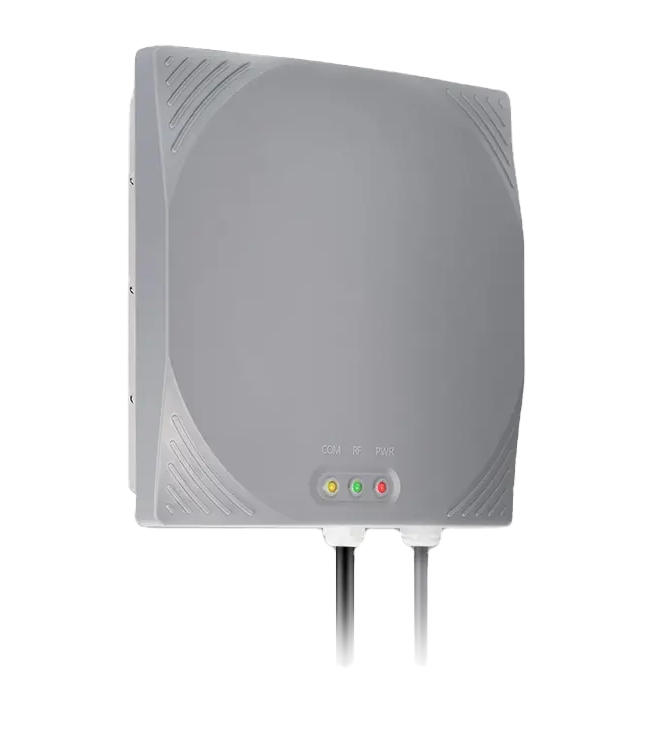
Proximity (RFID)
RFID technology uses passive tags that require a reader to determine their location. These tags are low-cost, making them an attractive option for certain applications. However, their detection capabilities are restricted to the presence or absence of the tag, meaning they cannot provide more detailed information about an object’s location or movement. Moreover, RFID systems do not support metrics or advanced analytics, which limits their applicability in more complex use cases and environments.
Despite these limitations, RFID is a suitable choice for applications where basic proximity information is sufficient. One prominent example is in retail stores, where security gates at the entrance and exit can detect tags on stolen items. When a customer tries to leave the store without paying for an item, the RFID tag triggers an alarm, alerting store personnel to the risk of potential theft.
In addition to theft prevention, RFID positioning systems can be employed in other scenarios where basic proximity detection is required. For instance, RFID tags can be used in warehouses to track the presence of pallets, containers, or individual items, simplifying inventory management. They can also be implemented in access control systems, where personnel badges with embedded RFID tags grant or deny entry to specific areas based on their authorization level.
Pros
- Low-cost tags make RFID an economical option for large-scale implementations.
- Simple detection capabilities make the technology easy to set up and maintain.
Cons
Limited to presence or absence detection, which restricts the range of use cases and the level of detail provided.
A low degree of accuracy and no support for metrics or advanced analytics limit the insights that can be gained from the collected data.
Use Cases
- Retail stores for theft prevention, warehouse inventory management, and access control systems.
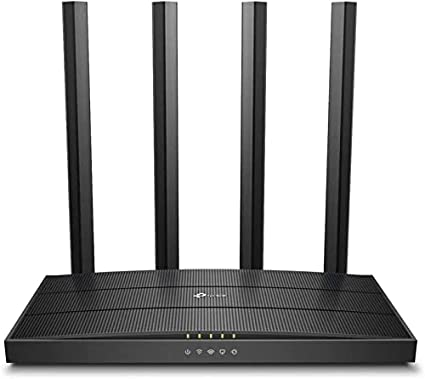
Wi-Fi
A Wi-Fi-based indoor positioning system capitalizes on existing Access Point (AP) hardware, such as routers and other networking equipment, to estimate the location of devices. By measuring factors like signal strength, Wi-Fi technologies provide an approximation of a device’s position within the network’s coverage area. While the accuracy of Wi-Fi is limited compared to other positioning technologies, it offers distinct advantages in some scenarios.
This technology is particularly useful when high accuracy is not a primary concern and there is already existing hardware infrastructure in place. In cases where a rough estimate of the location is sufficient, Wi-Fi can be an economical and efficient solution.
For example, on large university or corporate campuses, localization technologies that rely on Wi-Fi for positioning can help identify the building a person or object is in without the need for additional hardware or complex installations. Similarly, in shopping malls, this technology can assist in detecting which store a customer is visiting, improving the overall customer experience and enabling targeted marketing efforts.
Pros
- Uses existing hardware, minimizing the need for additional investments in infrastructure.
- Low implementation cost, as the technology capitalizes on pre-existing Wi-Fi networks.
Cons
- Limited positioning accuracy relative to other available localization technologies, which may be unsuitable for applications requiring precise location data.
Use Cases
- Campus building identification (e.g., universities, corporate facilities), shopping mall store detection, and tracking within large public spaces like airports or train stations, where identifying the general location of individuals or objects is beneficial.
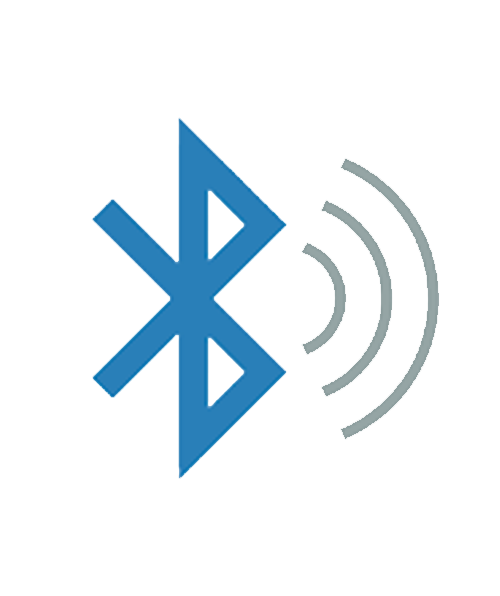
BLE
BLE is a wireless technology that has gained significant traction within the indoor positioning system market due to the degree of accuracy it achieves relative to Wi-Fi and its widespread compatibility with smartphones and tablets. BLE positioning systems are particularly well-suited for situations where coarse accuracy is sufficient, and the users already have a compatible device.
One of the primary advantages of BLE is that it supports a bring-your-own-device concept. Since most modern smartphones and tablets are equipped with BLE capabilities, users can easily leverage their personal devices to interact with the system. This reduces the need for specialized hardware, lowering the overall cost of implementation.
BLE technologies typically employ a network of Bluetooth beacons, which are strategically placed throughout the area of interest. These beacons communicate with user devices to provide location information and indoor navigation or targeted marketing services.
The technology is particularly useful for consumer-oriented applications like shopping malls, where it can guide customers to specific stores or attractions. Furthermore, BLE positioning technologies can be used in airports, museums, hospitals, or other large public spaces to enhance the user experience by offering indoor navigation or location services.
Pros
- Better accuracy than Wi-Fi, providing a more precise location estimation within indoor environments.
- Widespread device compatibility allows users to use their existing smartphones or tablets, reducing the need for additional hardware.
Cons
- Offers limited positioning accuracy, which may be unsuitable for applications that require precise and reliable location data.
Use Cases
- Indoor navigation for consumers in shopping malls, airports, museums, hospitals, or other large public spaces where coarse accuracy is adequate, and users can leverage their personal devices to interact with the system.
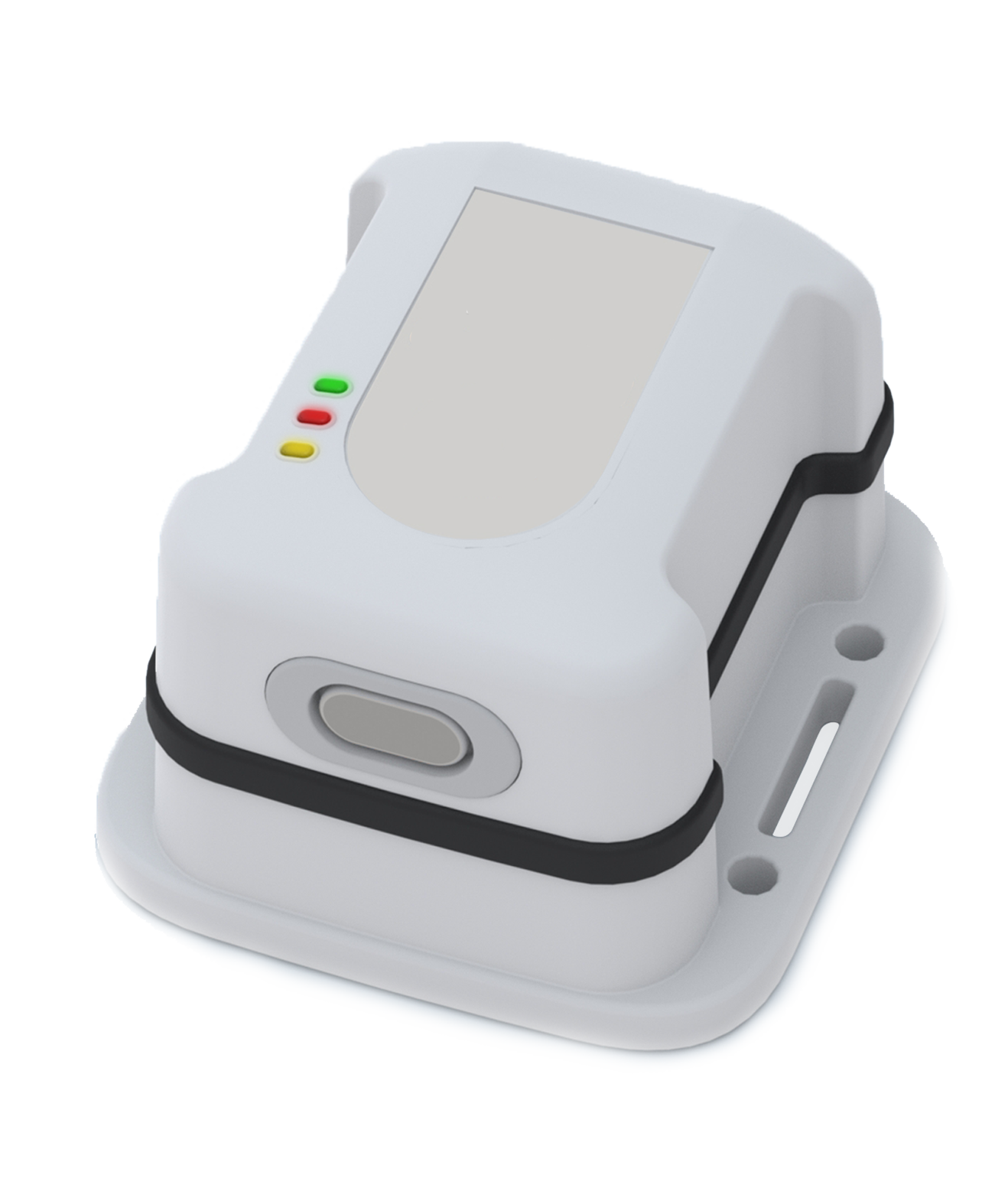
UWB (Ultra-Wideband)
UWB is a radio frequency positioning technology that offers 2D accuracy (up to 15cm) along the x and y axes. However, its accuracy in 3D (z-axis) is limited. A UWB indoor positioning system requires specialized hardware, including anchors and mobile trackers, which are responsible for transmitting and receiving signals to determine the position of objects.
One of the key strengths of UWB is its ability to support a large number of devices and provide relatively high update rates. This makes it well-suited for tracking multiple devices or fast-moving objects in real-time, allowing for efficient monitoring and management in various settings.
Despite its limitations in 3D accuracy, UWB technology is an excellent choice for applications where precision in 2D is sufficient. For instance, it can be used in logistics and warehouse environments to track the location and movement of goods, helping to optimize storage and retrieval processes. UWB can also be employed in sports or fitness centers to monitor the performance and movement of athletes, providing valuable data for training and injury prevention.
In manufacturing environments, UWB systems can be used to track the movement of tools and equipment, enabling better resource allocation and process optimization. Additionally, facilities may use UWB positioning technologies in instances where real-time tracking of robots and autonomous guided vehicles (AGVs) in 2D is critical for navigation and collision avoidance.
Pros
- Relatively accurate positioning capabilities, offering precise 2D location tracking along the x and y axes.
- Supports many devices and high update rates, making it suitable for real-time tracking of multiple devices or fast-moving objects.
Cons
- Limited 3D accuracy, which may not be adequate for applications requiring precise z-axis information.
- Requires specialized hardware, such as anchors and mobile trackers, which may increase the overall cost and complexity of implementation depending on the use case.
Use Cases
- Tracking multiple devices or fast-moving objects in logistics, warehouse management, sports and fitness, manufacturing, robotics, and autonomous vehicles where precise 2D real-time positioning accuracy is adequate.
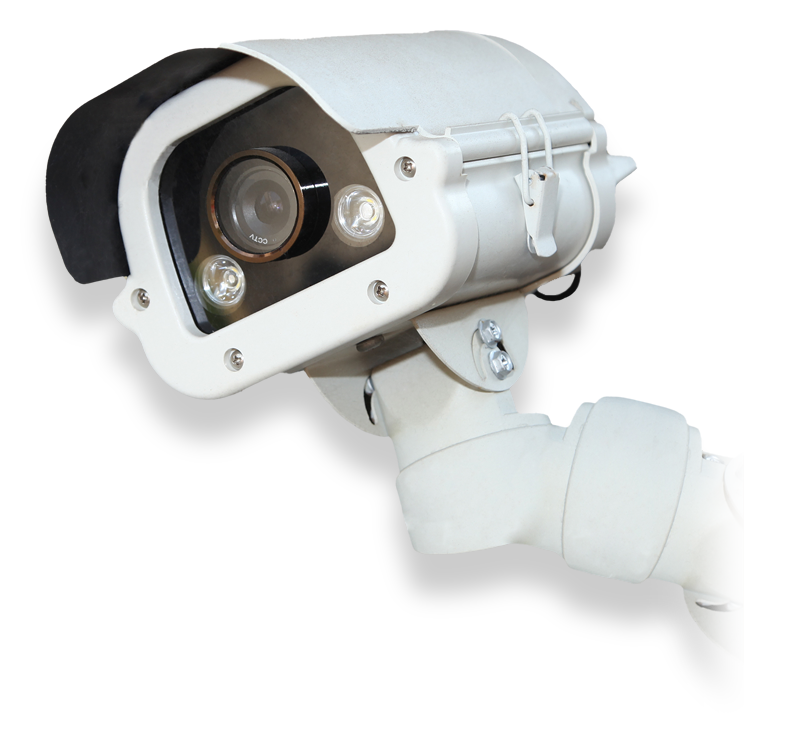
Vision
Vision-based positioning technologies use cameras and computer vision algorithms to track the position of objects and detect zone-based occupancy within a field of view. While not a true real-time location system like the aforementioned indoor positioning technologies, vision-based systems offer unique advantages in certain scenarios.
These systems are particularly effective in controlled environments with unobstructed views, where they can accurately monitor specific zones and detect the presence of objects or people. This makes them well-suited for applications like assembly lines or workspaces, where monitoring the placement of items on a workbench or the flow of materials through a production process is crucial. However, positioning systems that rely on vision capabilities come with several drawbacks, including computational intensity, expensive hardware, and complex setup.
Processing the video feeds and applying computer vision algorithms to analyze and track objects in real-time can require significant computational resources, which may not be feasible for all applications. The hardware, such as high-resolution cameras and processing units, is often costly. Additionally, the setup process can be intricate due to camera placement and installation, calibration, and software configuration.
Pros
- Zone-based occupancy detection allows for precise monitoring of specific areas within static environments.
- Suitable for controlled environments with unobstructed views, enabling accurate tracking of objects.
Cons
- Computationally intensive, requiring significant processing power to analyze video feeds and apply computer vision algorithms in real-time.
- Expensive hardware and complex setup can be prohibitive for some applications or organizations with limited resources.
Use Cases
- Monitoring specific zones in a workspace, such as a workbench or an assembly line, to ensure proper placement of items, efficient material flow, and adherence to production processes in manufacturing or other controlled environments.


ZeroKey’s Quantum RTLS Technology
Quantum RTLS is an advanced indoor positioning system (also referred to as a real-time location system) that provides reliable, consistent, and scalable positioning with 1.5mm 3D accuracy in real time. The technology is designed to offer a high level of precision for a wide range of applications and use cases, particularly within industrial environments where facility-wide operations rely heavily on human-centric workflows and processes.
In terms of cost and setup, Quantum RTLS is comparable to UWB systems, making it an attractive option for organizations seeking high accuracy without increased expense or complexity. The system supports a large number of sensors that operate at high update rates, striking the perfect balance between performance, reliability and scalability.
Quantum RTLS is particularly well-suited for applications where hyper-accuracy is crucial. In manufacturing environments, for example, the technology can be used to monitor the precise 3D position, movement, and interaction of workers, tools, AGVs, inventory, and equipment, in real-time. These capabilities enable businesses to optimize processes, reduce errors, avoid costly rework, increase productivity and enhance safety. The degree of accuracy that Quantum RTLS achieves can also be leveraged in healthcare settings, such as hospitals or rehabilitation centers, to track patient movement or monitor the performance of medical procedures.
Moreover, Quantum RTLS can be employed in virtual or augmented reality applications, where precise tracking of users and objects is essential for an immersive and interactive experience. In robotics and automation, the technology facilitates accurate real-time navigation, positioning, and collision avoidance.
Pros
- 1.5mm 3D accuracy, enabling hyper-accurate positioning for a variety of applications within any environment.
- Relatively low cost (comparable to UWB).
- 100 times more accurate than UWB systems.
- Quick and easy set-up due to auto-calibration capabilities, making hyper-accurate positioning more accessible without a significant increase in cost or complexity.
Cons
- If the application only requires 2D accuracy, other indoor positioning systems may achieve this at a lower cost.
Use Cases
- Suitable for any environment where millimeter-accurate 3D digitization of physical processes is essential for optimizing performance, safety, productivity, cost savings, and user experience. Industries that benefit from deploying Quantum RTLS include manufacturing, steel fabrication, automotive, warehousing and inventory management, supply chain, healthcare, virtual or augmented reality, and robotics, among others.

Making the Decision
Choosing the right positioning technology depends on your use case, desired accuracy, budget, and infrastructure. By understanding the strengths and weaknesses of each technology, you can make an informed decision to meet your unique requirements.
Your decision will depend on the specific parameters of your application and the desired outcomes you wish to achieve. RFID is fitting for simple proximity detection and cost-effective solutions, while Wi-Fi technologies excel at leveraging existing hardware for low-accuracy location information. BLE is optimal for scenarios where coarse accuracy is adequate and user devices are already BLE-enabled. UWB is suitable for situations that require reliable 2D accuracy and high update rates, but it cannot be used to achieve precise 3D accuracy. Alternatively, vision-based systems are well-suited for controlled environments with unobstructed views and zone-based occupancy detection, though they involve higher costs and are more complex to deploy.
Quantum RTLS is the preferred solution for hyper-accurate 3D real-time positioning across a broad spectrum of applications, especially those centered around human-centric processes and workflows. Carefully evaluating the specific needs of your application and weighing the pros and cons of each technology will allow you to increase efficiency, automate processes, and optimize your operations.
To learn more about Quantum RTLS, visit www.zerokey.com/quantum-rtls.
